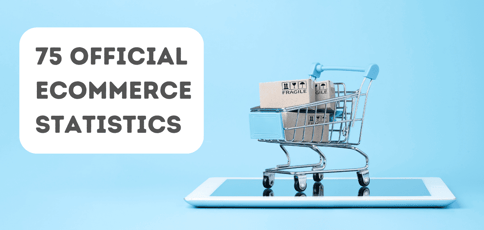
Electronic commerce, or eCommerce, is a form of retail that has made it possible to buy and sell virtually any product and service with the click of a button. You can purchase foodstuffs, ready-made meals, clothes, shoes, jewelry, furniture, and even automobiles through the convenience of an eCommerce platform.
Our dependence on eCommerce is so great that the industry is predicted to produce $6.31 trillion in sales in 2023 and account for a flabbergasting 21.2% of global retail sales.1 The web hosting industry deserves special mention for the rise of eCommerce, as cheap web hosting plans have made opening an online shop easy.
Here are 75 official eCommerce statistics that are bound to have you window shopping on Amazon in no time.
1. The eCommerce Industry Is Expected to Generate $6.31 Trillion in 2023
Our over-reliance on eCommerce is no surprise, and as a result, the eCommerce industry is expected to generate sales amounting to approximately $6.31 trillion in 2023.1
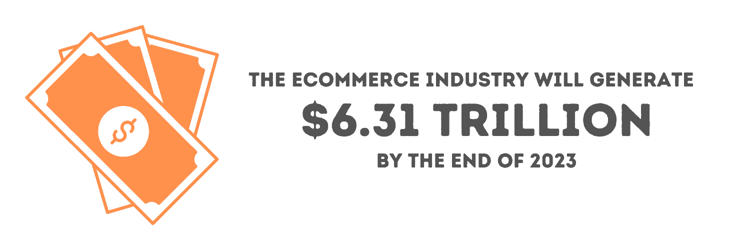
2. Global eCommerce Sales Grew to $5.7 Trillion in 2022
Global retail eCommerce sales figures are expected to grow considerably over the next few years. Retail eCommerce sales grew approximately 328% between 2014-2022, from $1.336 trillion in 2014 to a whopping $5.717 Trillion in 2022.1
3. Global eCommerce Sales Are Forecasted to Reach $8.148 Trillion
Led by eCommerce retailers like Alibaba and Amazon (two of the world’s largest eCommerce retailers), global eCommerce sales are projected to grow from $6.31 trillion in 2023 to $8.14 trillion in 2026, representing a growth of more than 29%.1
4. Alibaba Had Online Sales of More Than $700 Billion in 2022
Founded in June 1999 by Jack Ma, Alibaba is a Chinese multinational specializing in retail, eCommerce, internet, and technology services. Alibaba is the world’s largest eCommerce retailer, with online sales exceeding $700 billion in 2022.1
5. Amazon Will Surpass Alibaba With $1.2 Trillion in Estimated Sales
Amazon was founded back in July 1994 by Jeff Bezos, and it has been a household name for as long as I can remember.

The Seattle-based eCommerce Goliath, Amazon, will surpass Alibaba in estimated online sales by 2027, when it will generate more than $1.2 trillion.1
6. China’s Projected eCommerce Revenue in 2023 Is $1.319 Billion
Nearly half of China’s retail sales — led by major Chinese eCommerce players like Alibaba, Taobao, Tmall, and JD.com — take place through the internet, making China the largest eCommerce market in the world.1 To put it into perspective, eCommerce revenue in China is forecasted to reach $1.3 billion in 2023.2
JD.com is world-famous for its drone delivery service. Imagine your package being delivered by a drone! The future is here.
7. The Chinese eCommerce Market Will Grow at a CAGR of 12.17%
The Chinese eCommerce market will continue to snowball in the coming years. It is expected to grow at a CAGR of 12.17% between 2023 and 2027, resulting in projected revenue of $2.088 billion in 2027.2
8. The Number of eCommerce Users in China Will Grow to 1.3 Billion
The number of Chinese eCommerce users is projected to reach 1.3 billion by 2027, with user penetration expected to hit 93.4%.2 This basically means that 93.4% of the estimated Chinese population in 2027 is likely to be an eCommerce user. Astounding.
9. More than one-third (36%) of Retail Sales in the UK Take Place Online
Rather surprisingly, the United Kingdom is the second largest eCommerce market in the world, with 36% of all retail sales taking place through the Internet.1
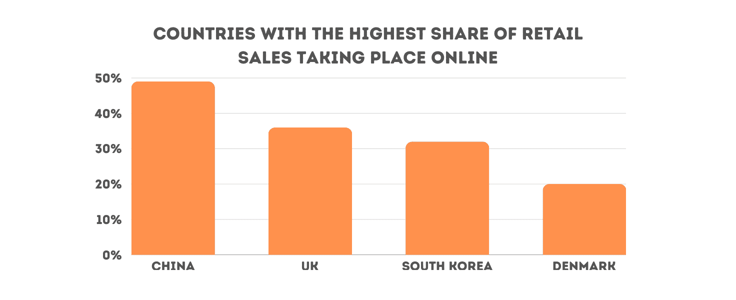
10. A Steady Rate of Retail Sales in South Korea (32%) and Denmark (20%) Take Place Online
South Korea is the third largest eCommerce market, followed by Denmark, with 32% of all retail sales in South Korea and 20% of retail sales in Denmark taking place online.1
11. The Philippines eCommerce Market Will Grow at 24.1% in 2023
Major eCommerce markets in Asia, including the Philippines and India, are poised to grow significantly in 2023. The Philippines is the fastest-growing eCommerce market in the world, with online sales predicted to grow 24.1% in 2023.3
12. India’s eCommerce Market Will Grow at 22.3% in 2023
With a population of 1.428 billion, India is the world’s most populous country, followed by China with a population of 1.412 billion.4 It was only a matter of time before India took to eCommerce like a duck to water. India is the world’s second fastest-growing eCommerce market with an estimated growth rate of 22.3% in 2023.3
Amazon India (a subsidiary of Amazon), Flipkart, Nykaa, and Myntra are some of the top eCommerce companies in the country.
13. eCommerce in the US Grew Nearly 103% in 2017-2023
eCommerce in the US is rapidly growing, and it is one of the largest markets in the world.
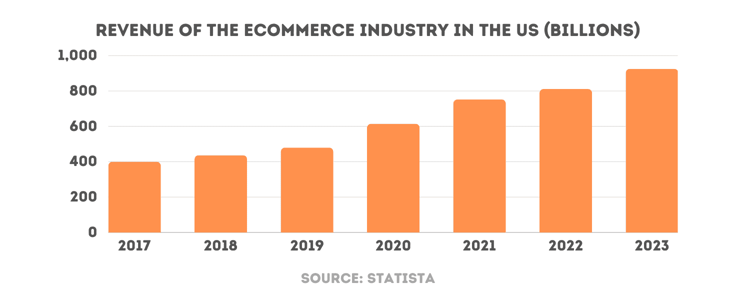
The eCommerce industry in the US grew from $399.66 billion in online sales in 2017 to $925.36 billion in 2023, representing approximately 131% growth.5
14. The eCommerce Market in the USA Is Predicted to Generate $925.36 Billion in 2023
The eCommerce market in the US is forecasted to grow by nearly 14.09% in 2023, reaching $925.36 billion in online sales.5
15. The eCommerce Industry in the US Is Estimated to Produce $1.4 Trillion in 2027
According to estimates, revenue in the eCommerce market in the US will grow from $925.36 billion in 2023 to $1.415 trillion in 2027, almost 53% in that period.5
16. Walmart Has an eCommerce Market Share of 6.3% in the US.
An American multinational retail chain, Walmart is more famous for its physical stores than for its eCommerce wing.
That said, Walmart is quite comfortably the second-largest retail eCommerce company in the US, with a market share of 6.3%.6
17. Amazon Has an eCommerce Market Share of 37.8% in the USA
Amazon is by far the largest retail eCommerce company in the US.
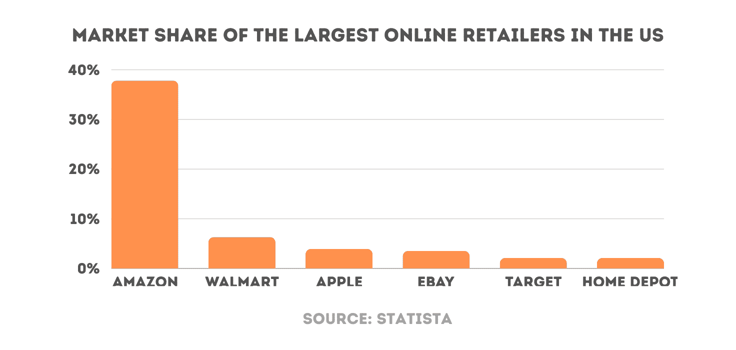
Commanding 37.8% of the market, Amazon comfortably beats the likes of Walmart, Apple, eBay, and Target.6
18. Apple, eBay, and Target Account For 9.5% of the US eCommerce Market
Apple (3.9%), eBay (3.5%), and Target (2.1%) are the third, fourth, and fifth-largest eCommerce companies in the USA, respectively, commanding a combined market share of 9.5%. Home Depot follows closely with a market share of approximately 2.1%.6 I bought my first tool kit from Home Depot way back in 2014! Memories.
19. Amazon Had $356 Billion in Sales in the US in 2022
Unsurprisingly, the US is Amazon’s largest market, with $356 billion in online sales in 2022. Germany ranked second with $33 billion in sales, followed by the UK with $30 billion in sales.6
20. Latin America Accounts for 300 Million+ eCommerce Users
Known for its traditions, food, culture, and landscape, Latin America, which has more than 300 million users, is one more popular market for eCommerce companies.7
21. PSG Sold 150,000+ Messi Jerseys in Seven Minutes in 2021
Since the previous eCommerce statistic was about Latin America, we had to include a Lionel Messi stat. Messi broke the internet when he was announced as a PSG player back in 2021.

He may have broken the official PSG website as well, as more than 150,000 Messi jerseys were sold online in around seven minutes.8 Talk about being a record-breaker.
22. Online Sales in Latin America Were Estimated at Approximately $168 Billion in 2022
Latin America is another fast-growing eCommerce market, accounting for nearly $168 billion in online retail sales in 2022.7 It is worth noting that eCommerce adoption is still on the lower side in Latin America, so the best is yet to come!
23. Online Sales in Latin America Will Account for Nearly 20% of All Retail Sales
It is forecasted that 20% of all retail sales in Latin America will be conducted through the internet by 2026.7 This still leaves plenty of room for offline shopping.
24. Brazil and Mexico Account for Nearly 60% of the eCommerce Market in Latin America
Brazil and Mexico lead the way in Latin America with nearly 30% of the Latin American eCommerce market. Peru, Columbia, and Argentina are swiftly growing markets as well.7
25. Mobile eCommerce Sales in Argentina to Increase by 2.4-fold
Mobile eCommerce — also referred to as mobile commerce or m-commerce — refers to online shopping through a smartphone rather than a computer.
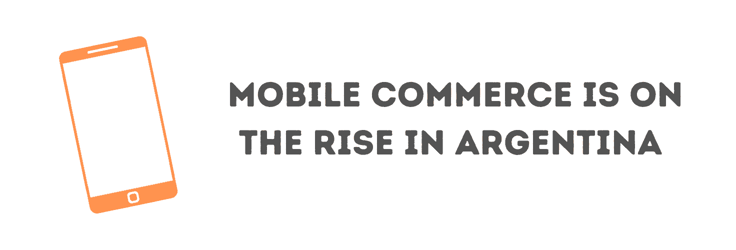
Mobile eCommerce is rapidly growing in Argentina and is predicted to grow by 2.4 times between 2022 and 2026.3
26. The eCommerce Market in Europe Is Projected to Grow to $902 Billion
The European eCommerce market is colossal, comprising major economies like the UK, Germany, France, Italy, and Spain. Online sales in Europe increased each year in 2017-2022, and the eCommerce market in the region is expected to grow to a mammoth $902 billion in 2027.9
27. The UK Will Have 60 Million eCommerce Users in 2023
The population of the United Kingdom is nearly 68 million.10 And according to predictions, approximately 88% of the UK’s population (60 million people) will be an eCommerce user in 2023.11
Given the football craze in the region, we would not be surprised if the sale of football jerseys and related merchandise were a significant component of eCommerce in the UK!
28. eCommerce Will Account for 38% of all Retail Sales in the UK
In 2025, an estimated 38% of all retail sales in the United Kingdom will take place online. This figure stood at 32% in 2020, reflecting steady progress in the UK.12
29. Germany Will Have 68.4 Million eCommerce Users
Not one to be left behind, Germany is forecasted to have 68.4 million eCommerce users in 2025.
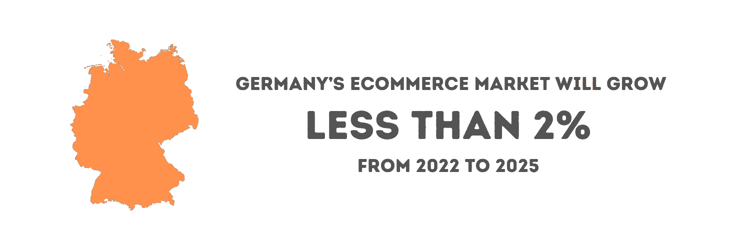
The number of eCommerce users in the country in 2022 was 67.2 million, meaning that less than 2% of new users will be added to the market by 2025.13
30. A Whopping 46% of German eCommerce Users Use PayPal
PayPal is the preferred payment method for online shopping in Germany, with 46% of eCommerce users employing PayPal. Other leading payment methods include debit cards, credit cards, and paying by invoice.14
31. A Slow Website Could Cost an eCommerce Platform $2.5 Million Annually
If you operate a top eCommerce website that makes sales of more than $100,000 daily, a slow website could cost you northwards of $2.5 million in lost sales.15
32. The Average Website Page Takes 2.5 Seconds to Load
The average website page takes 2.5 seconds to load on a computer and 8.6 seconds on a smartphone.16 This basically means that online shopping on a computer is faster than on a smartphone! One of the solutions is implementing Accelerated Mobile Pages (AMP).
33. Roughly 32% of Marketers Cannot Implement AMPs
Slow mobile page load speeds could be detrimental to an eCommerce business. While AMP technology is a viable solution, 32% of marketers do not have the developer resources to implement it.15

If your online business is doing well (or you have relevant resources at hand), we recommend incorporating this technology at the earliest.
34. IONOS Offers a Quick Page Loading Speed of 1.23 Seconds
IONOS is one of the quickest web hosting providers, with a webpage loading speed of 1.23 seconds. Bluehost (1.36 seconds), GoDaddy (1.48 seconds), and HostGator (1.59 seconds) are rapid as well.17
If you plan on building a WordPress website for your online business, we recommend opting for a Bluehost WordPress hosting plan (managed), as the web host is the best in the business by a distance.
35. A2 Hosting’s Webpage Loading Speed Is 0.295 Seconds
Thanks to its ultra-fast infrastructure, A2 Hosting is the fastest web host, with a webpage loading speed of just 0.295 seconds.18
36. Slow Websites Reduce Customer Satisfaction by 16%
A one-second delay in the loading speed of a webpage reduces customer satisfaction by 16%. 15 The quicker a webpage, the more likely it is to retain customer interest.
37. An Astounding 82% of Customer Purchase Decisions Are Impacted by Slow Websites
It is time for you to invest in a fast web host if your eCommerce business experiences slow webpage loading speeds!
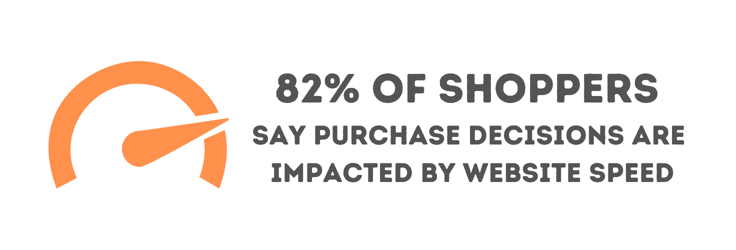
More than three-quarters of customers (82%) say their purchase decisions are impacted by slow webpage speeds.15
38. Roughly 25% of Visitors Will Abandon a Slow Website
One in 4 website visitors will abandon a website if it takes more than four seconds to load.15 This is reasonable, as the average loading speed of a webpage is a mere 2.5 seconds.16
39. About 64% of Online Shoppers Will Shop Elsewhere if Dissatisfied
Almost two-thirds (64%) of online shoppers will shop on a different eCommerce platform if they are dissatisfied with their shopping experience.15 Remember, “customer is king”!
40. Poorly Performing Websites Deter 46% of Users
Website ratings and reviews matter, as 46% of users said they will avoid a poorly performing website altogether.15 Businesses must focus on delivering the best possible user experience.
41. Page Loading Speeds of Less Than Two Seconds Incur a Bounce Rate of 9%
Website bounce rate refers to the percentage of website visitors who leave the website after viewing just one page.
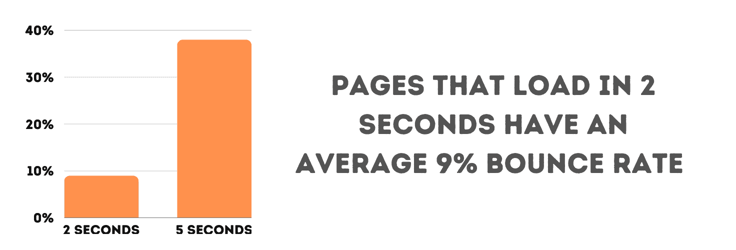
Websites with a page loading speed of less than two seconds experience a low bounce rate of just 9%.15
42. First Page Google Search Results Have an Average Webpage Speed of 1.65 Seconds
Surprise, surprise: The Google Search engine prefers fast websites. Websites on the first page of Google Search results experience an average webpage loading speed of just 1.65 seconds.15
43. Around 55% of eCommerce Activity Takes Place Through a Smartphone
Smartphones are the preferred method for eCommerce, with 55% of all time spent on eCommerce platforms taking place through mobile phones.15 Hence, it is super important to optimize your website for mobile.
44. A One Second Delay Will Reduce Conversions by 4.42%
For each second of delay on an eCommerce website, conversions drop by 4.42%.15 This could amount to substantial revenue loss for a business.
45. Conversions Increase by 8.4% for a 0.1% Mobile Website Speed Improvement
eCommerce is a battle of fine margins. Mobile traffic trumps computer traffic on eCommerce platforms, and conversions increase by a stunning 8.4% for a 0.1% improvement in mobile website loading speeds.15
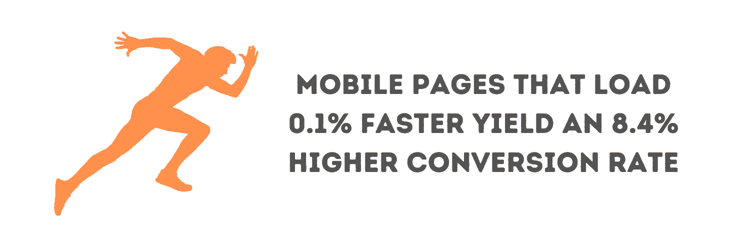
46. Research Shows 18% of Customers Will Abandon Their Cart if a Website is Slow
Rather damningly, if the checkout pages of an eCommerce platform are too slow, 18% of customers will abandon their cart!15 Website speed certainly impacts customer loyalty.
47. Checkout Speed is the Priority for 46% of Shoppers
If the checkout speed is slow, 46% of customers will not return to the eCommerce platform. Checkout speed is their top priority.15
48. Amazon Would Lose $1.6 Billion Annually For a Site Loading Delay of One Second
If Amazon’s website loading speed were to increase by just one second, it would lose a projected $1.6 billion annually.15 Website speed is the real king of eCommerce.
49. WordPress Powers 43.1% of All Websites
WordPress is the world’s most popular content management system (CMS), as 43.1% of all websites on the internet are powered by it.19

In other words, there are 487 million WordPress websites, as the total number of websites in the world is 1.13 billion.20
50. Around 6.7 Million eCommerce Websites Use WordPress
An astonishing 6.7 million eCommerce platforms are powered by WordPress. These websites use the WooCommerce WordPress plugin to help them manage their online stores.21
51. WordPress Has 59,500+ Plugins
eCommerce plugins for WordPress enhance the eCommerce functionality of your website. WordPress has more than 59,500 plugins, of which WooCommerce is the most popular for eCommerce.22
52. More Than 90 Million People Have Downloaded WordPress
The core WordPress software is free to use, and more than 90 million people have downloaded the software from WordPress.org.23 The numbers are astonishing.
53. Elementor is Used by 21% of WordPress Websites
If you want to build a pixel-perfect website for your eCommerce business, you should consider Elementor, a popular WordPress subcategory that is used by 21% of all WordPress website owners to build their websites without a single line of code!19

54. WooCommerce holds 38.74% of the eCommerce Software Market Share
WooCommerce is quite comfortably the largest eCommerce software market share holder, commanding 38.74% of the market.25 For this reason, many web hosting companies offer specially crafted WooCommerce hosting plans.
55. Squarespace holds 14.67% of the eCommerce Software Market Share
Squarespace is an exceptional website-building platform that controls 14.67% of the eCommerce software market share.25 It also offers logo-making, creator, SEO, and email marketing tools.
56. Shopify holds 10.32% of the eCommerce Software Market Share
Last but not least, Shopify is a popular, cloud-based eCommerce company that commands 10.32% of the eCommerce software market.25 It unifies all of your eCommerce activities onto a single platform, enabling you to effectively commence, market, and manage your online business.
57. Shopify Powers 4 Million+ Businesses
More than 4.36 million online businesses across 175 countries use Shopify to power their websites.26
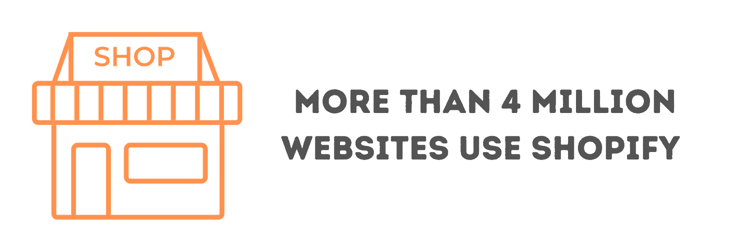
This includes the likes of Kylie Cosmetics, Skims, Sephora, Victoria Beckham Beauty, and Red Bull.27
58. The USA has 62% of all Shopify Stores
It is safe to say the USA is Shopify’s biggest market, as 62% of Shopify stores are based in the country.26
59. More Than 700 Million People Will Buy From a Shopify Store in 2023
According to estimates, more than 700 million people will buy from a Shopify merchant in 2023, with the US alone accounting for 50% or approximately 437,500 of these merchants.26
60. There are 32,181 Shopify Plus Stores
In total, Shopify Plus stores number 32,181, with the US having the most (18,767) stores. The UK has the second-most Shopify Plus stores, followed by Australia, Canada, France, Germany, and Japan.26
61. The Number of Shopify Buyers Has Grown by 2,217%
The number of Shopify buyers in 2014-2022 has grown by 2,217%, from 28 million in 2014 to 649 million in 2022.
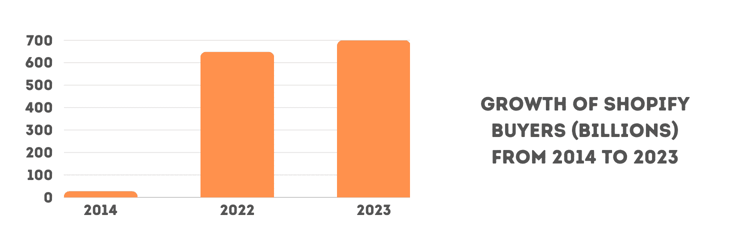
The number of Shopify users is projected to reach 700 million in 2023.26
62. Shopify’s Revenue Grew 23,518% in 2012-2022
With a mind-boggling revenue growth of 23,518% in 2012-2022 (from $23.71 million to $5.6 billion), Shopify deserves its place as a top eCommerce software market share holder.26
63. An Estimated 2.14 Billion People Shop Online in 2023
The world population is roughly 8.07 billion.28 This means that more than 26.5% of the global population (2.14 billion people) shops online in 2023.26 eCommerce is certainly transcending borders.
64. A Surprising 63% of eCommerce Sales Take Place Through a Smartphone
Data shows that 63% of all online shopping sales take place through a smartphone, highlighting the importance of an optimized mobile shopping experience.29 To put it into perspective, 73% of the global population aged 10 and above owns a mobile phone (I got my first mobile phone when I was 15).30
65. Alibaba Commands 24% of the eCommerce Market
The world’s largest eCommerce retailer, Alibaba, commanded 24% of the market, followed by Amazon, with a 13% market share.25
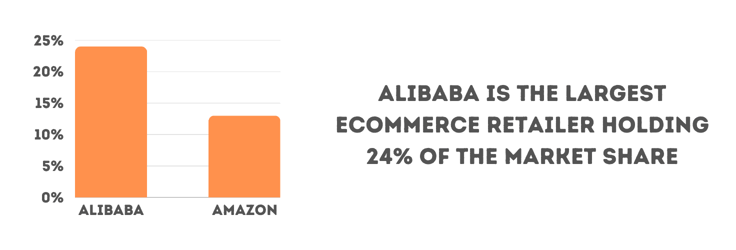
66. Data Shows 76% of Consumers Have Bought a Product They Saw on Social Media
Social media is one of the greatest avenues for eCommerce, with brands increasingly relying on platforms like X (formerly Twitter), Instagram, and TikTok to introduce new products to online shoppers. The rise of social media influencers is well-documented as well. A total of 76% of consumers have bought a product they saw on a brand’s social media page.31
67. About 7% of eCommerce Users Shop Daily
Roughly 7% of all eCommerce users shop online daily, and 40% of them shop at least once every week! Given that you can purchase almost anything online, this is understandable. Most eCommerce users (35%) shop every two to four weeks.31
68. The Influencer Market Is Valued at $21.1 Billion in 2023
The global social media influencer market is valued at $21.1 billion in 2023, having more than doubled since 2019.32 Nano, micro, and macro influencers are taking eCommerce by storm, and influencer marketing is one of the most rewarding marketing strategies for businesses today.
69. The Majority (72%) of Millennials and Gen Z Follow Influencers
If you are looking to tap into the Generation Z (Gen Z) and millennial markets, hiring a solid influencer or network of influencers is recommended, as 72% of people in these age groups follow influencers on social media.33

70. A Fewer Percentage (50%) of Millennials Trust Influencers
Only half of millennials trust recommendations made by influencers and may consider purchasing the product. This number drops to 38% when products are recommended by a celebrity.33
71. Only 25% of Marketers Leverage Influencers
One in four marketers, or 25%, leverage influencer marketing to sell products online, and 89% of them will maintain or increase their investment in influencer marketing in 2023.33
72. More Than Half (56%) of Marketers Invest in Micro-Influencers
Micro-influencers are by far the most in demand, as 56% of marketers prefer to invest in them. The reason is simple, they generate around 60% more engagement than macro influencers, and they cost less as well.33
73. Instagram Was the Most Popular Influencer Marketing Platform in the US in 2022
A whopping 72% of marketers used Instagram for influencer marketing campaigns in 2022, and this number is projected to grow by roughly 4% in 2023.

3.8 million of these posts use the hashtag “#ad,” and lifestyle and beauty were the most popular categories for influencer marketing.33
74. Companies Will Spend $268 Billion On Social Media Advertising in 2023
The total spend on social media advertising is estimated to grow to $268 billion in 2023.34 Social media ad spend is increasing steadily, and companies may need to further increase their budgets to compete in years to come.
75. Companies Spend $521 Billion On Targeted Ads
Targeted advertising is another popular marketing strategy that focuses on delivering product advertisements to customers (through the internet) based on their interests, preferences, and (unfortunately) location. Such is its popularity that companies spend approximately $521 billion each year on targeted ads!35
What Is the Future of eCommerce?
The future of eCommerce is bright, to say the least. As mentioned earlier, the eCommerce industry is growing considerably and is expected to generate sales of $8.148 trillion in 2026, which is nearly 29.13% more than the projected $6.31 trillion in 2023. In other news, eCommerce giant Amazon is forecasted to overtake Chinese juggernaut Alibaba as the world’s largest eCommerce retailer by 2027.1
While eCommerce will not (and should not) completely take over retail, online sales are bound to increase over time, with countries like China, the UK, South Korea, Denmark, the Philippines, and India leading the way.1 If you swear by offline shopping, don’t worry; your favorite local shops, supermarkets, boutiques, and malls will continue to thrive.
Sources and Further Reading
- https://www.statista.com/statistics/379046/worldwide-retail-e-commerce-sales/
- https://www.statista.com/outlook/dmo/ecommerce/china/
- https://www.statista.com/statistics/266064/revenue-growth-in-e-commerce-for-selected-countries/
- https://en.wikipedia.org/wiki/Demographics_of_India/
- https://www.statista.com/statistics/272391/us-retail-e-commerce-sales-forecast/
- https://www.statista.com/statistics/274255/market-share-of-the-leading-retailers-in-us-e-commerce/
- https://www.statista.com/topics/2453/e-commerce-in-latin-america/
- https://www.sportbible.com/football/psg-sold-more-than-150000-lionel-messi-shirts-in-seven-mun-20210813/
- https://www.statista.com/forecasts/715663/e-commerce-revenue-forecast-in-europe/
- https://worldpopulationreview.com/countries/united-kingdom-population/
- https://www.statista.com/topics/2333/e-commerce-in-the-united-kingdom/
- https://www.statista.com/statistics/285978/e-commerce-share-of-retail-sales-in-the-united-kingdom-uk/
- https://www.statista.com/forecasts/786557/e-commerce-forecasted-users-germany/
- https://www.statista.com/statistics/434341/e-commerce-popular-payment-methods-germany/
- https://www.websitebuilderexpert.com/building-websites/website-load-time-statistics/
- https://www.tooltester.com/en/blog/website-loading-time-statistics/
- https://www.ionos.com/hosting/web-hosting/
- https://websitesetup.org/hosting-reviews/a2-hosting/
- https://w3techs.com/technologies/details/cm-wordpress/
- https://www.forbes.com/advisor/business/software/website-statistics/
- https://www.zippia.com/advice/wordpress-market-share-statistics/
- https://wordpress.org/plugins/
- https://wordpress.org/download/counter/
- https://blog.hubspot.com/website/wordpress-stats/
- https://www.statista.com/statistics/710207/worldwide-ecommerce-platforms-market-share/
- https://www.demandsage.com/shopify-statistics/
- https://shopifyservices.us/companies-that-use-shopify/
- https://www.worldometers.info/world-population/
- https://www.statista.com/statistics/568684/e-commerce-website-visit-and-orders-by-device/
- https://www.itu.int/itu-d/reports/statistics/2022/11/24/ff22-mobile-phone-ownership/
- https://www.retailtouchpoints.com/resources/76-of-consumers-buy-products-seen-in-social-media-posts/
- https://www.statista.com/statistics/1092819/global-influencer-market-size/
- https://blog.hubspot.com/marketing/influencer-marketing-stats/
- https://sproutsocial.com/insights/social-media-statistics/
- https://www.enterpriseappstoday.com/stats/targeted-advertising-statistics.html/







